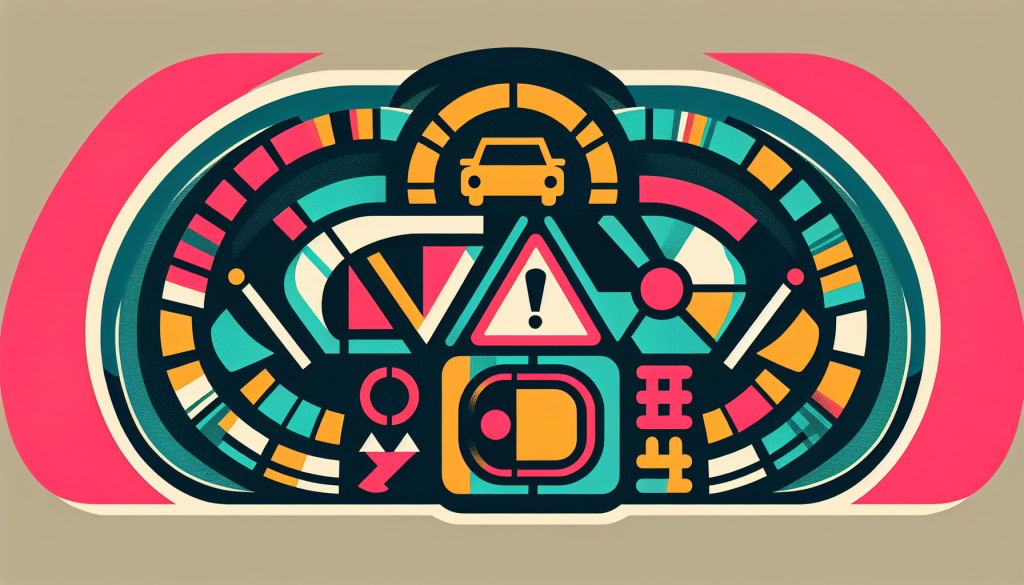Decoding Dashboard Warning Lights
Dashboard warning lights are like your car’s way of sending you a text message about its health. Knowing what these lights mean can save you from a world of trouble and expensive repairs.
Why Dashboard Warning Lights Matter
Think of dashboard warning lights as your car’s way of saying, “Hey, something’s up!” These lights can alert you to anything from low oil to serious issues like brake failure or engine trouble. Ignoring them is like ignoring a toothache—it’s only going to get worse and more expensive. So, knowing what each light means can help you act fast and keep your car running smoothly.
Common Dashboard Warning Lights and What They Mean
Here’s a quick rundown of some common dashboard warning lights and what they’re trying to tell you:
| Warning Light | Meaning | What to Do |
|---|---|---|
| Problem with the engine or emissions system | Get a diagnostic check ASAP | |
| Low oil pressure | Check oil levels; add oil if needed | |
| Possible brake system issue | Check brake fluid; get professional help | |
| Battery charging issue | Check battery and alternator | |
| Engine overheating | Check coolant levels; let the engine cool down | |
| Issue with the Anti-lock Braking System (ABS) | Get a diagnostic check | |
| Airbag system issue | Get a diagnostic check |
For a full list of dashboard warning light symbols, check out our dashboard warning light symbols page.
What to Do When These Lights Pop Up
Each warning light has a specific message and action plan. Here’s a closer look:
- Check Engine Light: This one’s a biggie. It means there’s an issue with your engine or emissions system. Don’t ignore it—schedule a diagnostic check to find out what’s wrong. More details are in our dashboard warning light diagnosis article.
- Oil Pressure Light: Low oil pressure is a serious issue. Check your oil levels and add oil if needed. If the light stays on, get professional help. For more info, visit our dashboard warning light oil page.
- Brake System Light: This light means your brakes might be in trouble. Check the brake fluid levels and consult a pro if needed. More details are on our dashboard warning light brake page.
By getting to know these common dashboard warning lights and what they mean, you can keep your car in tip-top shape. For more detailed troubleshooting tips, check out our dashboard warning light troubleshooting guide.
What to Do When Dashboard Warning Lights Pop Up
Quick Steps When Your Dashboard Lights Up
Seeing a dashboard warning light can be a bit nerve-wracking, but don’t panic. Here’s what you should do right away:
- Figure Out the Light: Grab your car’s manual or check out our dashboard warning light guide to see what the light means.
- Judge the Urgency: Some lights need immediate attention, others can wait a bit. A flashing check engine light? That’s serious—get on it now. For more info, see dashboard warning light flashing.
- Pull Over If Needed: If the light is red or flashing, like the oil pressure or brake light, pull over safely and turn off the engine. This can prevent more damage. Check out our sections on dashboard warning light oil and dashboard warning light brake for more.
- Check the Basics: Look at the oil level, coolant level, and tire pressure. If you can safely fix any obvious issues, do it. For more details, see dashboard warning light coolant.
- Restart the Car: Sometimes, turning the car off and on again can reset the light. For tips, read our article on reset dashboard warning lights.
| Warning Light | What to Do | Urgency |
|---|---|---|
| Check Engine | Look for serious issues, check the manual | High |
| Oil Pressure | Pull over, check oil level | Very High |
| Coolant Temperature | Pull over, let the engine cool | Very High |
| Battery | Check battery connections | Medium |
| Brake System | Pull over, check brake fluid | Very High |
Getting Professional Help
If the lights stay on or show a big problem, it’s time to call in the pros. Here’s how:
- See a Mechanic: Book an appointment with a certified mechanic who knows their stuff. They can do a dashboard warning light diagnosis to find out what’s wrong.
- Use Diagnostic Tools: Mechanics have fancy tools to read error codes from your car’s computer, giving them the exact issue. Learn more in dashboard warning light troubleshooting.
- Follow Their Advice: Based on what they find, do what the mechanic suggests. This might mean dashboard warning light repair or swapping out bad parts like the dashboard warning light fuse.
- Regular Check-Ups: Keep up with regular car maintenance to avoid problems. This can help prevent issues like dashboard warning light battery or dashboard warning light alternator problems.
- Keep Records: Save all your diagnostic reports and repair receipts. This helps track recurring issues and is useful for future checks.
For more on common problems and fixes, visit our article on dashboard warning light issues.
By taking care of dashboard warning lights quickly and getting professional help when needed, you can keep your car running smoothly and safely.



